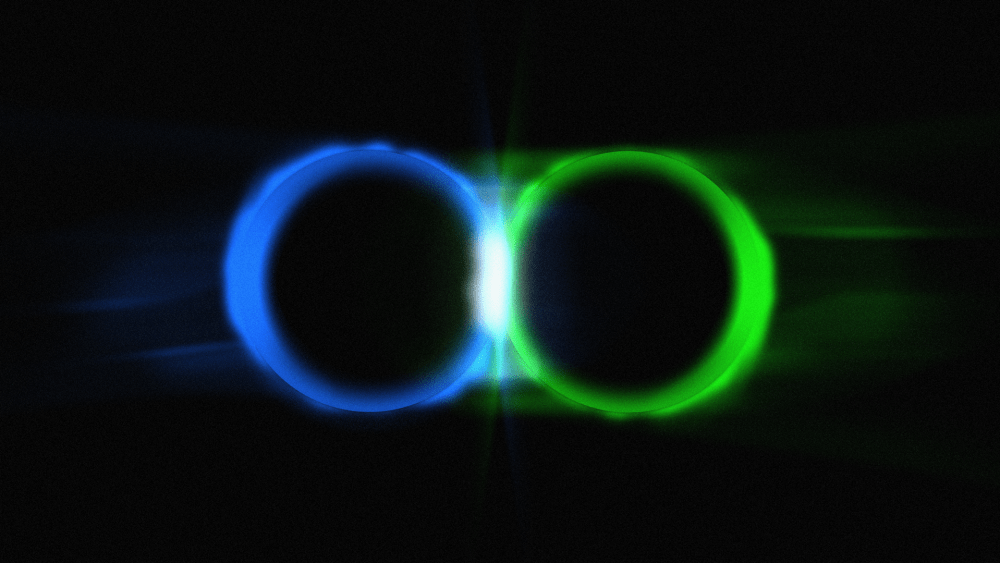The expression “dynamic duo” predates modern media. From politics to comic books, society seems to reward the title to pairings of people so iconic that their reputation as collaborators can overshadow the popularity of the very things which they create.

In creativity, as in physics, when two entities collide, an energy transfer occurs— and while not scientifically proven, I would argue that the more exponential or explosive the creative collision, the more mess and magic it can contain. From mutual respect, trust, and someone having your back to mutual credit, negotiation, and potentially stepping on each other’s toes.
Continue to pretend that this is a science, and consider the collision of energy as exponential— a moment of impact followed by an aftermath that is generative, divergent, and overall imbued with a lot of potential force. My hypothesis is that the resulting potential of any creative collision is stronger the more different the two people are. After all, people from different places, who speak different languages, or that have disparate realms of knowledge and practice cover more ground. The safer each person feel’s bringing their entire personality and perspective to the table, the more two people are able to capitalize on the broader range of what is possible. Energetically, the force of the collision can also be greatly enhanced by some degree of experience-agnostic fearlessness, self-awareness, confidence, and overall high levels of interest and curiosity in the subject matter at hand.

Conversely, and in consequence, to creative collisions lies the aspects of unification or harmony. The necessary putting together of pieces, and with that, remarkable moments of revelation when the contrast becomes complementary. As an individual, experiencing this harmony in the creative process can result in some awe-inspiring moments. For example, the experience of making something that surprises you. The gratification that comes with successfully negotiating the pieces together. Getting to the end of the creative process and finding yourself at a destination worth finding. All the magic of co-creating a world on paper, with words, in film, light, or sound that has more depth and harmony than it would have, had you struck out on your own.
The mess is this: most times, not all of the pieces fit. At some point, you will have to sacrifice something you’re proud of in order to co-create something better. Sometimes negotiations can be confusing. Other times, the person may need a break, and you’ll have to shoulder the work for a bit while they take care of themselves. It takes two to tango, and you will need to be flexible and adapt as the rhythm changes over time.
From collision to coexistence, the glue that holds it all together is only as strong and consistent as the steady beat of call and response and pattern of recognition or reciprocity that gets woven through the work in the daily choices each person makes with how they decide to show up and engage. It is here, in the daily process, where there are the most opportunities for creative abundance and personal expansion.

Working in a duo activates more parts of your personality. It provides opportunities to practice life enriching virtues like sensitivity, patience, trust, and flexibility— the value of which extend far beyond the professional realm. The more we practice, the better we get at surfing the ebbs and flows of active energy. This is instantiated by a growing understanding of one another’s strengths and weaknesses, and the ability to rely on another person when things get messy or overwhelming. How terrifying, yet exhilarating it can be to let go of entire chunks of the work and trust that the other person will continue to carry it in a direction you’ll be proud to put your name on. Ultimately, the most remarkable thing about dynamic duos is they offer rare chances to practice grace and connection in ways that make not only the work, but also you as a person better, fuller, and more adaptable in the face of life’s challenges.

Clint and Kelsy are colleagues at SYPartners, a consultancy where designers and strategists work closely with leaders to guide their organizations through times of transformation. Clint is a typography addict, aspiring furniture maker, and BBQ enthusiast who has helped teach design at ArtCenter College of Design in Los Angeles. Kelsy is a designer turned strategist, synth musician, and Dungeons & Dragons enthusiast who has helped to teach brand strategy at the School of Visual Arts in New York City.
